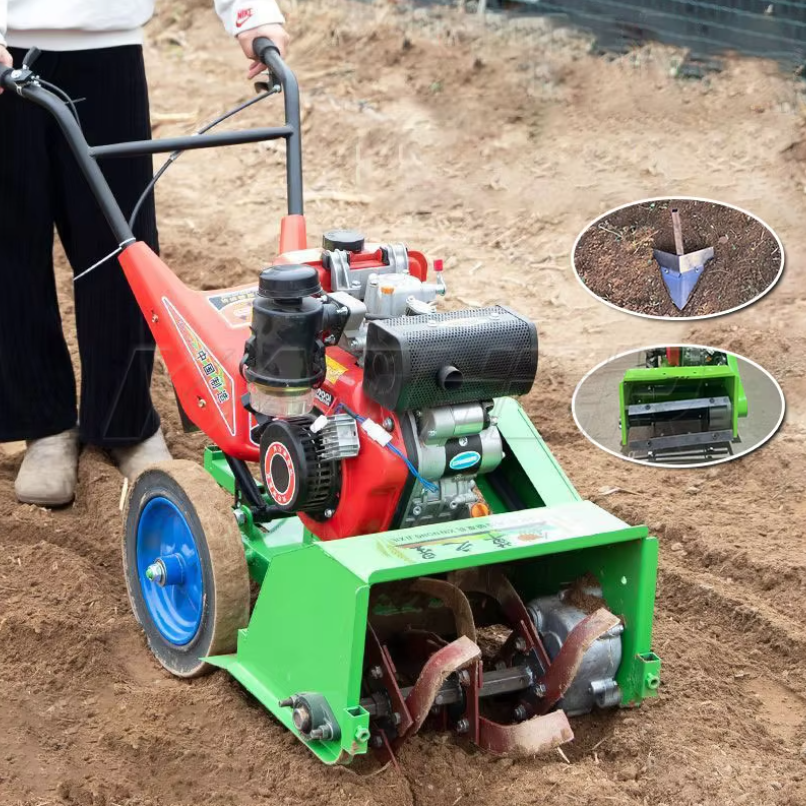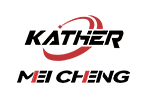Key Considerations When Sourcing Agricultural Machinery Parts
Identifying compatible parts for your equipment model
When you’re searching for ways to guarantee that your farm equipment can run as efficiently as possible, wouldn’t it be nice to find parts that are compatible with your particular make and model? Start by looking into the specific model and make to make sure everything is compatible. Looking up part numbers and specs might help you make a better decision. Manufacturer Websites and User Manuals The websites and user manuals of manufacturers are great to find approved parts that are just right for the needs of your equipment. Finally, discussing your crane equipment specs with qualified technicians or suppliers can provide feedback based on the parts they have seen the best results with, enabling you to choose parts that meet your equipment's requirements.
Understanding OEM vs aftermarket part differences
When it comes to selecting agricultural equipment components, it is vital to know the distinction between OEM (original equipment manufacturer) and aftermarket parts. OEM parts are made by the vehicle's manufacturer to ensure quality and are the cost-effective alternative to an aftermarket part. They tend to be fast and reliable, with cost being the only disadvantage. Aftermarket components (those not made by the original brand manufacturer) are usually cheaper to produce but they are inferior and are harder to fit. That being said, there are differences in quality and not every patch comes with the same warranty assurances. OEM parts are known to provide better longevity of performance which means when running over extended periods of time. But if budget is an issue, there are aftermarket parts you can purchase that will save some cash for other upgrades and not lose too much kick for the money.
Top Sources for Reliable Agricultural Equipment Components
Authorized dealership networks
Dealer networks Dealer networks are an important source for quality AG machinery parts. We partner with these dealerships to ensure genuine parts and expert advice is always available. Many brands have authorized dealerships that carry a full line of parts unique to their particular brand name, and we immediately have a place to go for the parts we would need to repair our machinery. A survey conducted among rrdolleny industry professionals has demonstrated that customer satisfaction is much higher when parts are supplied by official dealerships, because of the authenticity and professional assistance provided, therefore increasing the level of confidence in the repair.
Specialized agricultural parts distributors
Specific distributors offer inherent benefits when it comes to acquiring parts for agricultural machinery with niche expertise and some of the largest stock in this field. By working with local distributors, we are generally able to make sure shipments are timely and customer support is immediate when it's needed most, when planting and harvesting is at its peak. Case studies and customer stories tell the success stories of sourcing from specialist distributors to solve difficult equipment problems with a specialized understanding of machinery, and dedicated service. This has made them a critical member in our supply chain in filling the void when local support and availability is not enough.
Verified online marketplaces for machinery parts
In recent years, the serviceability of verified online markets for buying machinery elements has become unquestionable. We should be wary of any platforms that we choose from where we do not have any buyer protection and transparency to make sure we make safe transactions. Customer reviews and ratings have a significant impact on the credibility and quality of the online sellers. A noticeable surge in the number of procurement of agricultural spare parts online—a trend of making online procurement of machinery parts has already caught up. Interactive scrolls up In both cases, sourcing strategies need to adapt by going beyond traditional methods to include these platforms and the reach they offer.
Evaluating Quality in Agricultural Machinery Parts
Certification Requirements for Genuine Parts
Certification requirements of the authentic agriculture machinery parts is key to ensuring the safety of equipment and applicability. Certification is a way to show that parts are tested and comply with safety and performance standards, which can remove some of the risk of failure and accidents. Such parts are typically certified by organisations like Underwriters Laboratories (UL) and the International Organisation for Standardisation (ISO), which establish enforceable durability and reliability standards. All the way through industry, the records seem to be riddled with major glitches that were connected to unchecked parts, so why take a chance when it comes to certification? By making sure your parts are properly certified, you can keep your machines safe and choose to keep them running for as long as possible.
Material Quality Inspection Techniques
The quality of materials in agricultural construction elements has been evaluated using different inspection techniques. Tensile testing, microscopy and other techniques are widely used to guarantee the fitness of the parts for service. Third-party quality checks are integral for impartial assessments that verify whether or not parts meet industry standards. In the performance aspect of the equipments it can be observed that equipments using high quality material perform much better, which have low down time and high efficiency. It emphasises the need to utilise strict methods of quality control during agricultural machinery production.
Warranty and Return Policy Considerations
When selecting farm equipment parts, you need consider aspects of warranties and returns. These involve the amount the policy covers and how the claims process works. A good warranty can be a powerful persuasive tool in the sales process, improving the perceived quality of the components. Additionally, having a good return policy is typically a strong selling point for customers and builds/maintains trust, due to fair protection from bad merchandise. Product Line No stranger to customer wants and needs, LMC Equipment has found through consumer feedback surveys that warranty policies are vital to consumer satisfaction in the agriculture equipment field. Taking them into account will facilitate informed decision-making and optimize the use of machine parts.
Regional Suppliers and Global Procurement Options
Local Agricultural Cooperatives and Repair Shops
(Local sourcing from ag co ops and repair shops has a few specific benefits and I highly reccomend.) Local sourcing allows farmers to markedly reduce shipping times and thus reduce the down time of their equipment. And buying from local sourcing will keep money in the local economy and make the community more resilient. Examples of successful partnerships include local co-operative networks supplying farmers with the parts they need for their machinery as well as practical advice on looking after their equipment. Agricultural economists add that not only does local sourcing help safeguard supply chain stability, it motivates sustainable agricultural practices. These relationships enhance the relationship between the supplier and farming community and builds a network based on trust and integrity.
International Shipping Considerations for Heavy Parts
Obtaining heavy equipment parts from overseas suppliers is laden with a variety of challenges, including but not limited to complex customs regulations and minimum order fees. It is critical to handle these logistics effectively, so that essential components can be available whenever needed. Solutions involve ensuring good communication with freight forwarders and knowledge of the import process in different countries. Good practices in international procurement can also include ag case studies where local knowledge is used to speed up customs. Let’s see how those solutions can help in reducing time lags for part deliveries to farms across the world! Importance of strategic planning in global procurement.
Maintaining Equipment Longevity Through Proper Parts Selection
Preventive Maintenance Part Replacement Schedules
An efficient preventive maintenance plan is necessary for minimizing downtime and keeping farm equipment running. With a schedule of inspections and replacement of parts, the useful life of the equipment is maintained and unscheduled breakdowns are minimized. Specialized software can help farmers keep track of what parts they’ve used, when they need replacing, and when they may need to replace them in the future. Studies reveal that preventive maintenance has played a key role in reducing preventive equipment failures by a large proportion. For one, statistics from the agriculture sector show a 30% decrease in equipment breakdown with regular care. “When you stick to these schedules, you’re making sure machinery will function smoothly, so you won’t have costly breakdowns during critical planting and harvesting times.
Impact of Part Quality on Equipment Performance
Part quality is an important factor in the performance and longevity of agricultural machinery. The use of higher quality components will result in higher compatibility, more energy efficient products, a longer lasting part with a quality that is still unmatched in the industry. On the other hand, if poor-quality components are applied malfunctions occur more frequently with repair costs and equipment life being shortened. Professional equipment will multiply the quality of your machine by three – reaching 20% if you buy good parts. Think about a situation where farmers moved from economy to premium hydraulic systems and what: efficiency gains of 15% and a considerable reduction in repairs. Therefore, choosing superior components can be a crucial determinant of the high efficiency and reliability of the machine.
Cost-Benefit Analysis of Premium vs Economy Components
A thorough cost benefit analysis is a must when comparing premium to economy agricultural machinery parts. High-end materials might initially cost more but they tend to have longer life spans, so the units tend to be cheaper in the long run (with minimal failure and maintenance features). For example, when premium parts are compared to economy parts, one study revealed machinery with premium components experienced 40% fewer breakdowns over a five year period, making it a worthwhile initial investment. A similar perspective is often held by industry professionals who preach the benefits of premium parts when it comes to reducing unscheduled downtime and increasing equipment productivity. Farmers can objectively compare both options and make sound decisions that are consistent with their farm’s operation and financial objectives.
FAQ Section
What are OEM and aftermarket parts?
OEM, or Original Equipment Manufacturer parts, are produced by the original manufacturer and designed to meet strict quality standards, typically ensuring high performance and reliability. Aftermarket parts are made by third-party companies and are usually cheaper; however, their quality can vary.
Why should I source parts from authorized dealership networks?
Authorized dealership networks ensure access to genuine machinery parts and offer expert guidance, increasing the reliability of repairs and enhancing customer satisfaction due to product authenticity.
How can I evaluate the quality of machinery parts?
Quality evaluation involves understanding certification requirements, implementing material quality inspection techniques, and reviewing warranty and return policies to ensure long-term functionality and safety.
What are preventive maintenance part replacement schedules?
These schedules involve planning regular inspections and parts replacements to prolong equipment life, reduce downtime, and maintain efficiency, ensuring machinery operates smoothly during critical farming periods.






